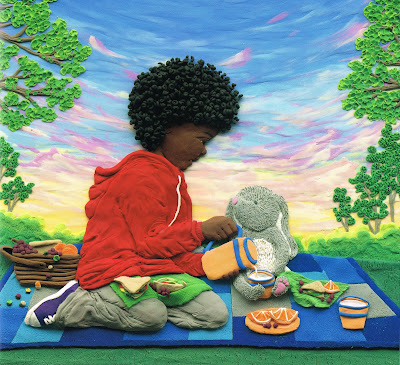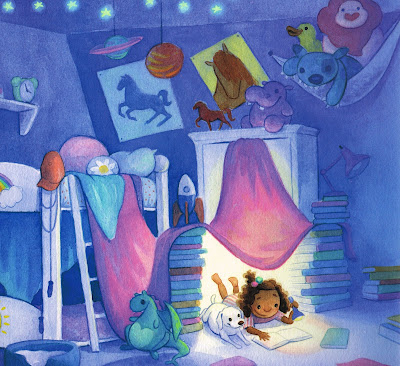Sea gardens are man-made reefs traditionally constructed by Pacific Northwest Indigenous peoples for cultivating clams and other shellfish. Some of these sea gardens which consist of boulders lined up at the lowest tide line have been around for thousands of years. They are significant cultural elements of the First Nations both for the food that is provided by the shellfish harvested here and the community that utilizes them and Kay Weisman brings readers to that community of gratitude with her words as Roy Henry Vickers delivers us to that sense of place.
 |
| From If You Want to Visit a Sea Garden by Kay Weisman, illus. by Roy Henry Vickers |
If You Want to Visit a Sea Garden begins with a child and adult setting out in the early morning when the sea gardens are revealed by the lowest of tides. They take their canoe out at dawn and "Listen closely for the symphony of clams, welcoming us to their beaches. Here, there and everywhere they spurt and sputter, exhaling right on cue."
As they walk on the beach, the elder, whether grandfather or father, recounts the history of the sea gardens, around for thousands of years, sometimes built piecemeal over time, to give habitat to creatures including rock crabs, chitons, sea stars and, of course, butter clams, littlenecks and cockles.
Imagine the generations of First Peoples who have maintained this wall in order to feed their families. They have come here to build and care for the sea garden, harvest and eat clams, and share stories and knowledge about this special place.
 |
| From If You Want to Visit a Sea Garden by Kay Weisman, illus. by Roy Henry Vickers |
Kay Weisman makes this pilgrimage to a sea garden a sacred experience for people and the environment. From the interaction between child and adult, solemn and instructive, to the awe-inspiring landscape of forever, Kay Weisman is respectfully informing her readers and honouring the legacy of sea gardens.
 |
| From If You Want to Visit a Sea Garden by Kay Weisman, illus. by Roy Henry Vickers |
If you want to visit a sea garden and cannot tour the West Coast, I suggest a stroll with a child and guardian in Kay Weisman and Roy Henry Vickers's captivating picture book. It's a safe and vibrant way to understand the magic of these amazing sea gardens.














































